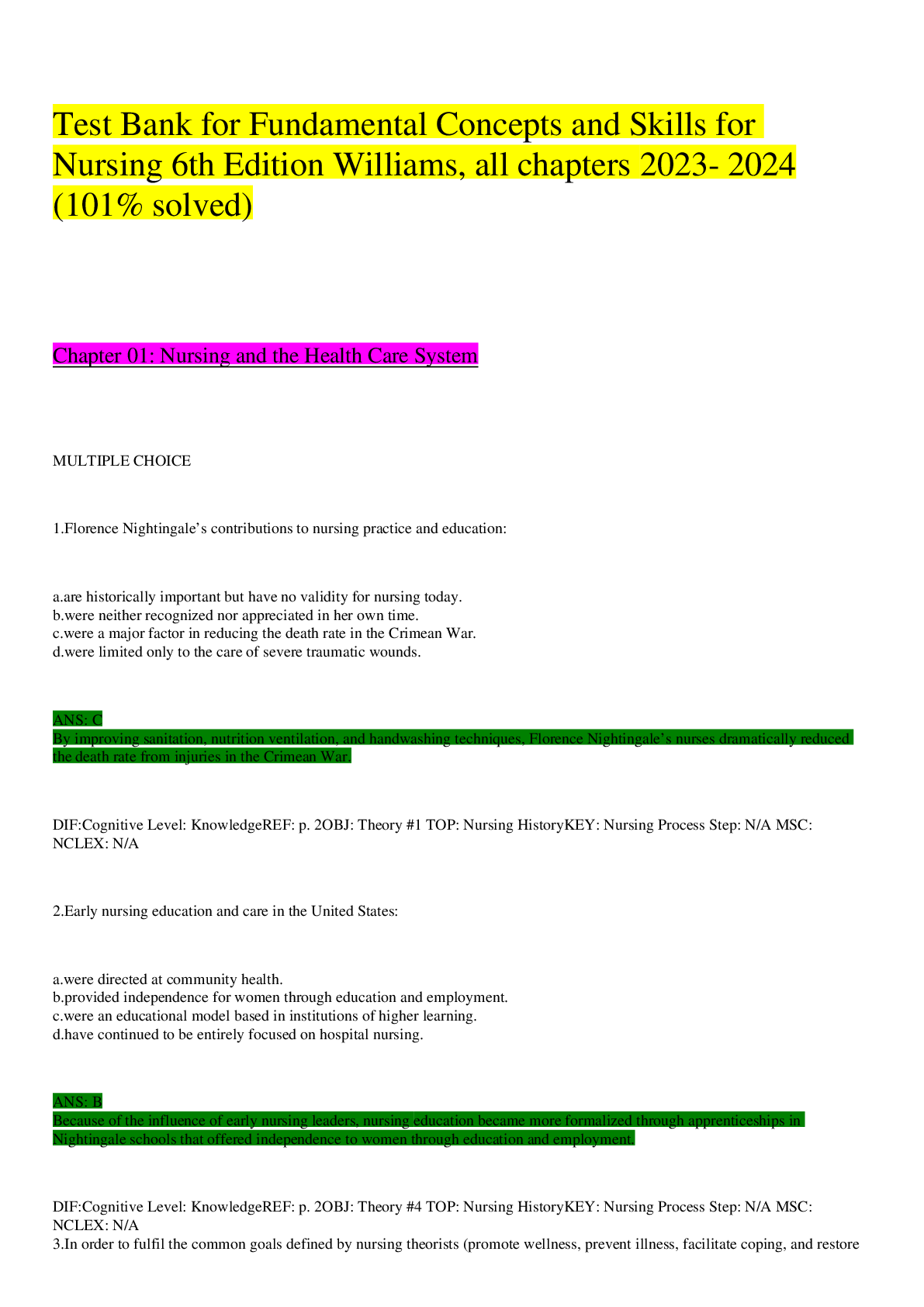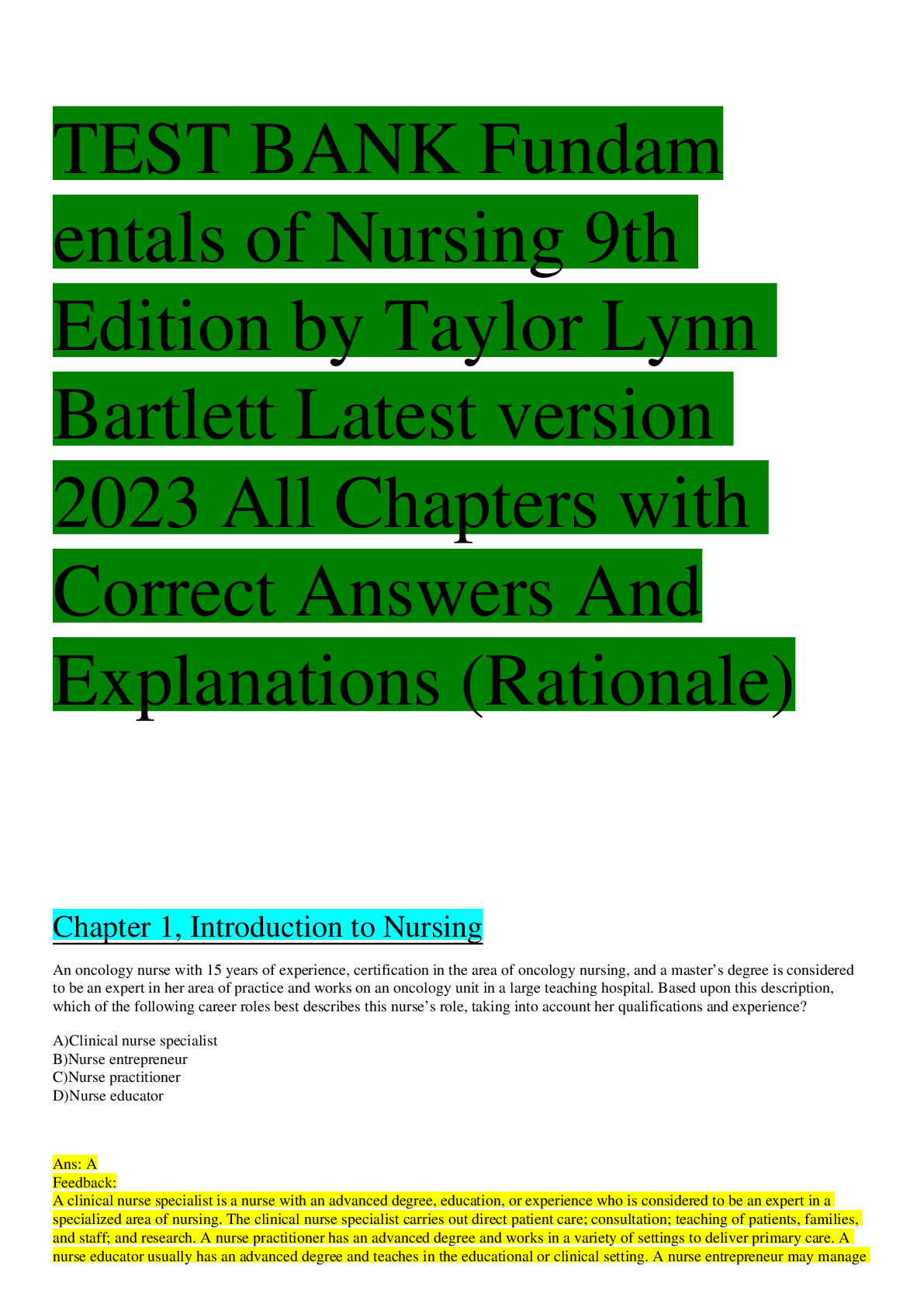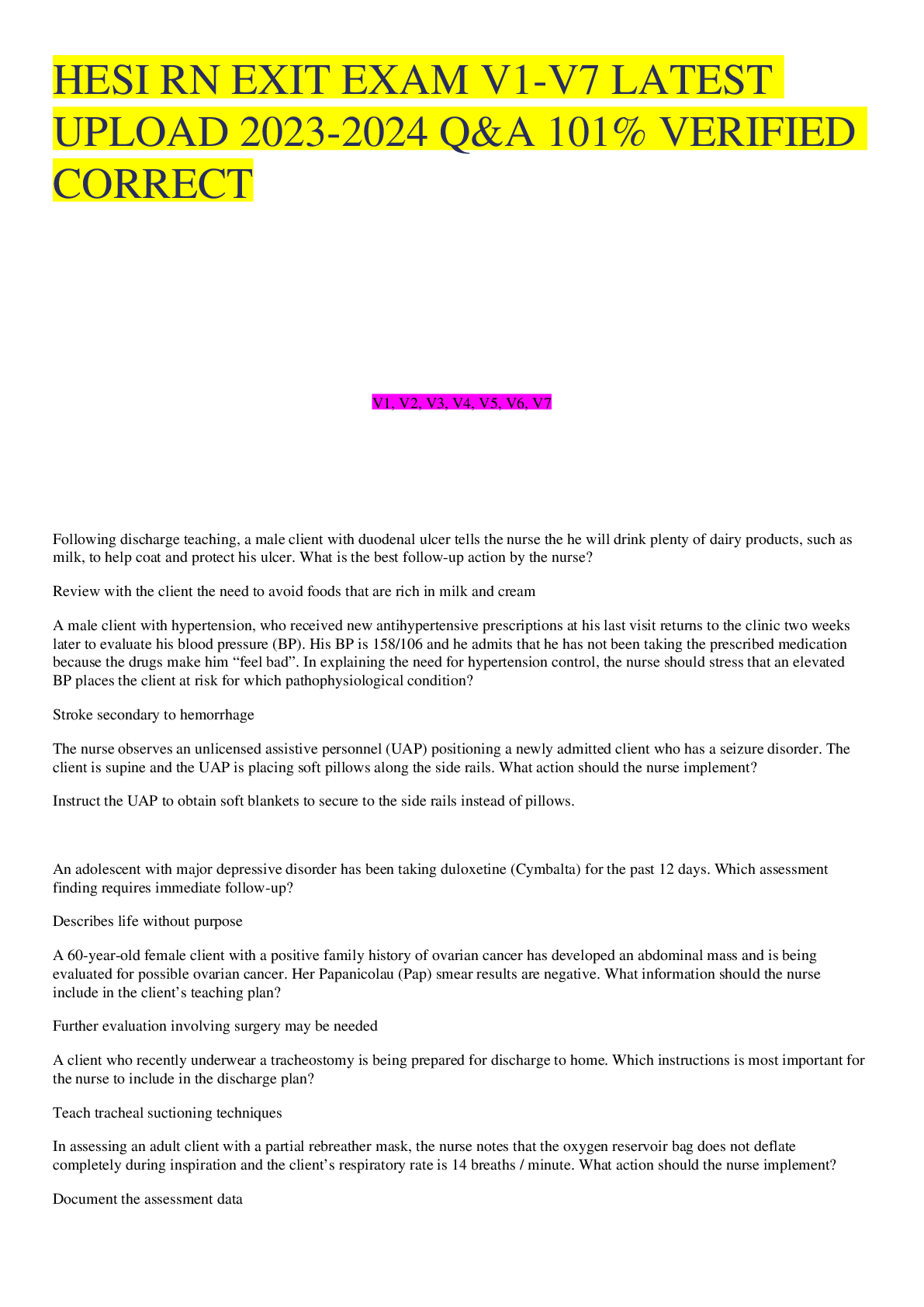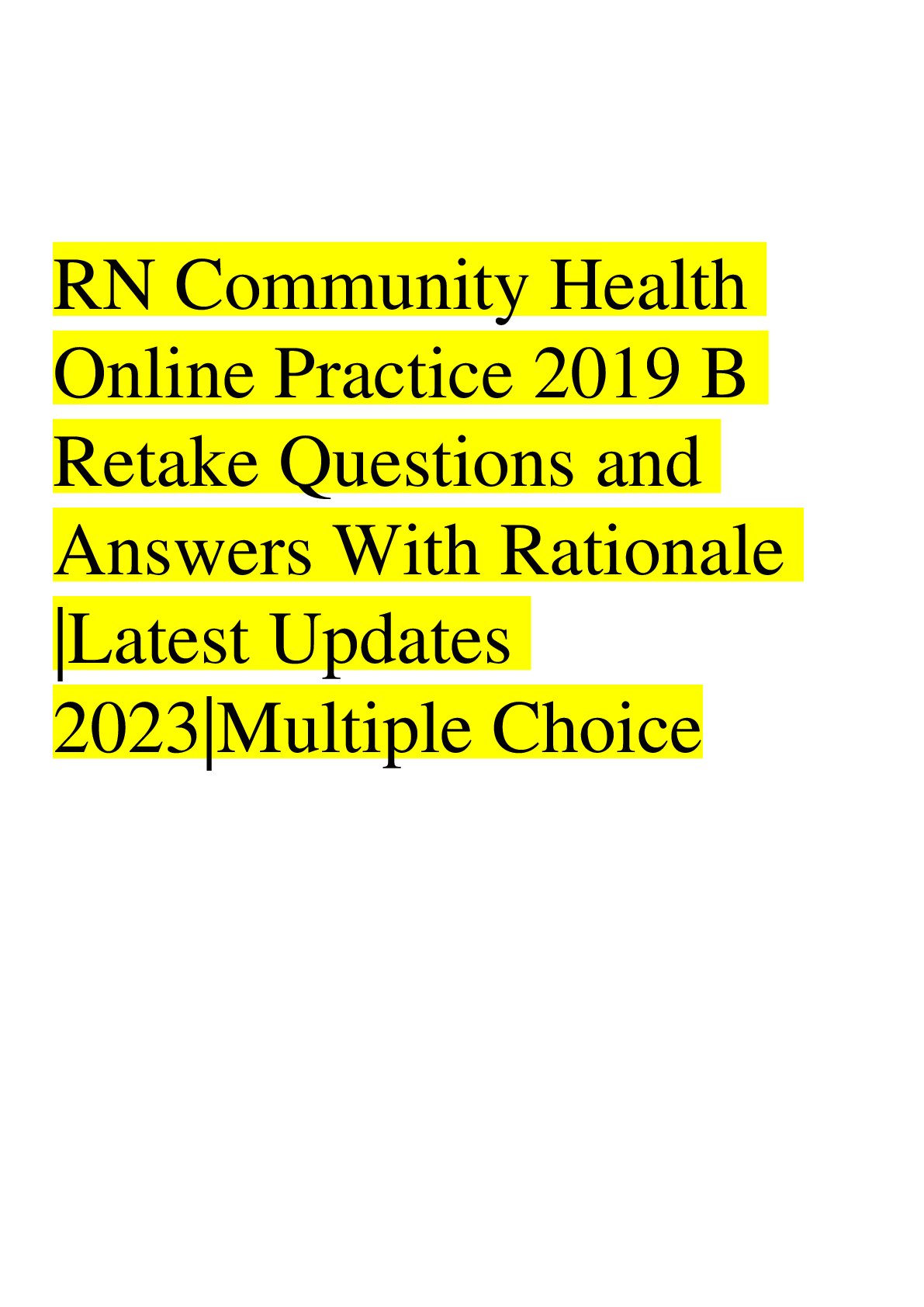Anatomy and Physiology - A&P 1 > EXAM > Test bank - Principle of Anatomy and Physiology,12th edition (rationale (All)
Test bank - Principle of Anatomy and Physiology,12th edition (rationale
Document Content and Description Below
Test bank - Principle of Anatomy and Physiology,12th edition (rationale) Chapter 1- An introduction to human body Multiple choice This is the study of the function of the body structu... res. a. Anatomy b. Physiology c. Dissection d. Histology e. Immunology Ans: B Difficulty: easy Feedback: 1.1 2. This is defined as a group of cells with similar structure and function. a. Tissue b. Organ c. Molecules d. Compounds e. Organism Ans: A Difficulty: easy Feedback: 1.2 3. Using your fingers to find your pulse on your wrist is an example of a. Auscultation b. Palpation c. Responsiveness d. Gross anatomy e. Physiologist Ans: B Difficulty: medium Feedback: 1.2 4. Percussion techniques can be used to determine a. Heart beats b. Pulse rate c. Amplify sounds d. Fluid in the lungs e. Enlarged organs Ans: D Difficulty: medium Feedback: 1.2 5. This is the sum of all cellular processes that occur in the body. a. Metabolism b. Anabolism c. Catabolism d. Auscultation e. Palpation Ans: A Difficulty: hard Feedback: 1.3 6. List the basic processes of life. Ans: The basic processes of life include metabolism, responsiveness, movement, growth, differentiation and reproduction. Difficulty: medium Feedback: 1.3 7. This is the regulation of body conditions within normal limits. a. Palpation b. Percussion c. Homeostasis d. Autopsy e. Histology Ans: C Difficulty: easy Feedback: 1.4 8. The systems that provide homeostasis are: a. Cardiovascular and Integumentary b. Nervous system and Endocrine c. Cardiovascular and respiratory systems d. Respiratory and muscular systems e. Urinary and integumentary systems Ans: B Difficulty: easy Feedback: 1.4 9. This body fluid directly affects the proper functioning of cells. a. Lymph b. Blood c. Interstitial fluid d. Aqueous humor e. Vitreous body Ans: C Difficulty: medium Feedback: 1.4 10. Name the differences between a positive and a negative feedback system. Ans: A positive feedback system will strengthen or reinforce a change in one of the body’s controlled conditions while a negative feedback system will reverse a change in a controlled condition. Difficulty: medium Feedback: 1.4 11. This is the structure of a feedback system that receives output from the control center. a. Receptor b. Body fluids c. Brain d. Effector e. Afferent Ans: D Difficulty: medium Feedback: 1.4 12. This is the structure of a feedback system that provides input to the control center. a. Receptor b. Muscle c. Brain d. Effector e. Efferent Ans: A Difficulty: medium Feedback: 1.4 13. A condition NOT regulated by a negative feedback loop would be: a. Childbirth b. Body temperature c. Blood pressure d. Heart rate e. Blood sugar Ans: A Difficulty: medium Feedback: 1.4 14. This is a change in body function that can be measured objectively. a. Symptom b. Disorder c. Disturbance d. Disease e. Sign Ans: E Difficulty: medium Feedback: 1.4 [Show More]
Last updated: 2 years ago
Preview 1 out of 527 pages

Buy this document to get the full access instantly
Instant Download Access after purchase
Buy NowInstant download
We Accept:

Reviews( 0 )
$23.00
Can't find what you want? Try our AI powered Search
Document information
Connected school, study & course
About the document
Uploaded On
Feb 02, 2023
Number of pages
527
Written in
Additional information
This document has been written for:
Uploaded
Feb 02, 2023
Downloads
0
Views
154












